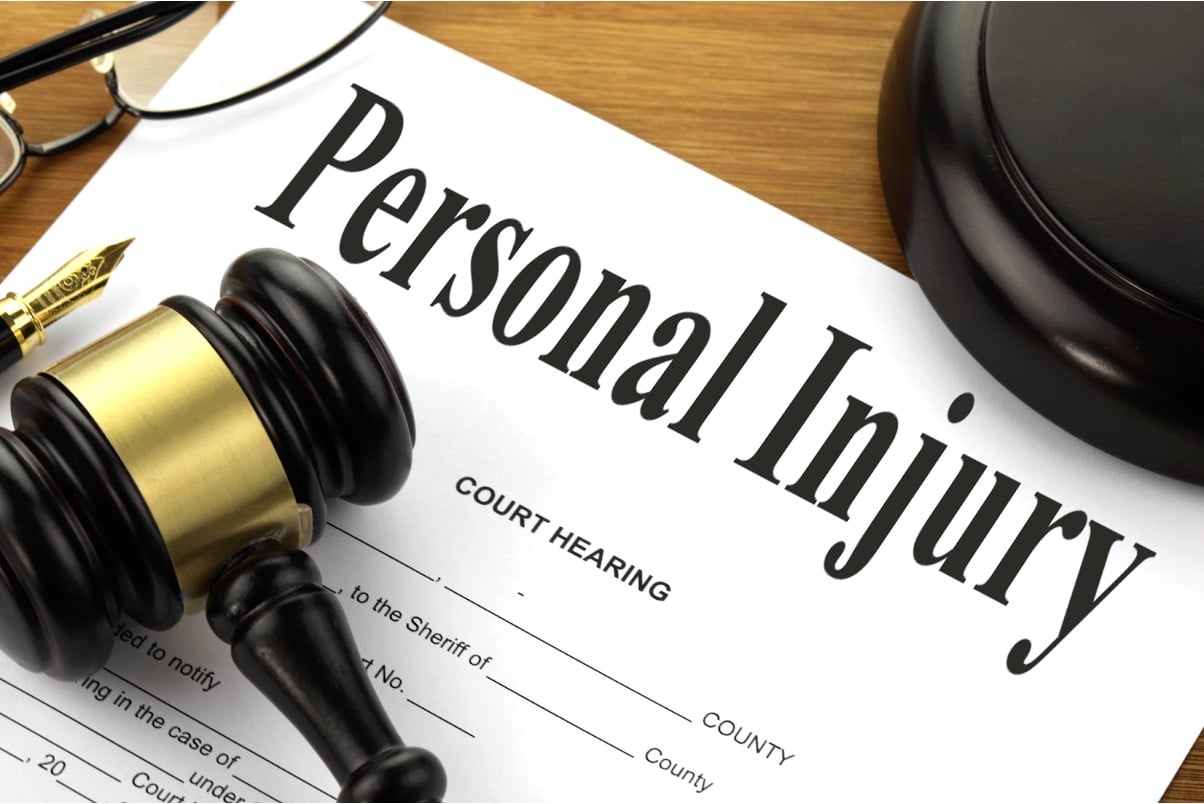Defining Birth Injuries and Their Types
Birth injuries refer to any harm that a baby might incur during the process of childbirth. These injuries can range from mild, such as minor bruising, to severe, like brain damage or nerve injuries that may have lasting effects. Understanding the different types of birth injuries is crucial for parents as they navigate the challenges ahead.
- Physical Injuries: These include fractures, nerve damage, and cephalohematoma, which is a type of bleeding under the cranial bones.
- Brain-Related Injuries: Conditions such as cerebral palsy and hypoxic-ischemic encephalopathy are caused by oxygen deprivation or trauma during birth.
- Infections: Babies can also suffer from infections acquired during delivery, which can lead to serious health issues.
It’s important for parents to recognize that while some injuries may resolve on their own, others might require long-term medical care and support. In cases where negligence is suspected, seeking legal advice can be a critical step. The Birth Injury Lawyers Group, with their 20 years of experience and over $750 million recovered for clients, can provide the necessary legal assistance and support during such trying times.
Emotional Repercussions for Parents and Siblings
The birth of a child is typically a time of joy and celebration, but when a birth injury occurs, it can cast a long shadow over the family’s emotional well-being. Parents may experience a range of intense emotions, including shock, sadness, guilt, and anger. These feelings can be overwhelming and may persist long after the birth, affecting their mental health and relationships.
Siblings of a child with a birth injury are also affected, albeit in different ways. They may feel neglected as parents focus more on the needs of the injured child, or they may struggle with feelings of guilt, confusion, or jealousy. It’s important for families to recognize these emotional dynamics and address them with compassion and openness.
- Acknowledge each family member’s feelings and provide a safe space for them to express themselves.
- Encourage open communication to prevent misunderstandings and build trust.
- Seek family counseling to help navigate complex emotions and foster a supportive environment.
The Long-Term Effects on Family Dynamics
The ripple effects of a birth injury can extend far beyond the initial trauma, influencing family dynamics for years to come. As children with birth injuries grow, their needs can evolve, requiring families to continuously adapt. This ongoing adjustment can strain relationships, alter family roles, and necessitate a reevaluation of long-term goals and expectations.
Key factors that influence long-term family dynamics include:
- The severity and nature of the birth injury
- The availability of medical and therapeutic resources
- The emotional and financial resilience of the family
- The presence of a supportive community
Families may find themselves navigating a complex web of emotions and responsibilities. Parents often experience a shift in their relationship as they balance caregiving with maintaining a healthy partnership. Siblings might take on more responsibilities or struggle with feelings of neglect or guilt. Over time, these changes can either strengthen the familial bond or create lasting tensions.
It is crucial for families to seek appropriate support and resources to mitigate these long-term effects. Legal avenues, such as birth injury settlements, can provide much-needed compensation for medical expenses, lost wages, and impacts on quality of life. Understanding state laws is essential as they can significantly affect settlement amounts. Many families prefer settlements over trials due to the quicker resolution they offer, allowing them to focus on the family’s well-being rather than prolonged legal battles.
Navigating the Emotional Landscape
Acknowledging Grief and Loss
For parents facing the aftermath of a birth injury, acknowledging the profound sense of grief and loss is a critical step towards healing. The journey of acceptance often begins with the recognition that it is natural to mourn not only for what has happened but also for the loss of the expected future. This process is deeply personal and can manifest in various ways, from sadness and anger to guilt and disbelief.
- Allow yourself to feel: Give yourself permission to experience the full range of emotions without judgment.
- Express your grief: Whether through writing, art, or conversation, find a safe outlet for your emotions.
- Honor your journey: Recognize that grief is not a linear process and that setbacks are a part of healing.
It is important for parents to understand that grief can be a shared experience within the family. Open communication with partners, children, and extended family members can help in navigating these complex emotions together. By acknowledging and confronting grief, families can lay the groundwork for building resilience and finding new paths forward.
Fostering Resilience and Positive Coping
In the wake of a birth injury, fostering resilience in parents is crucial for both their well-being and the care of their child. Resilience is the ability to recover from or adjust easily to adversity or change, and it can be cultivated through various strategies.
One key approach is to focus on self-care. Parents are often consumed by the needs of their child, but maintaining their own health is essential for sustaining the energy and emotional capacity required for caregiving. This can include:
- Regular physical activity to reduce stress and improve mood
- Adequate rest and nutrition
- Mindfulness practices or meditation to manage anxiety
Another aspect of positive coping is the cultivation of a positive mindset. This involves:
- Recognizing and celebrating small victories
- Maintaining hope and optimism for the future
- Practicing gratitude for the support and resources available
Lastly, it is important for parents to set realistic goals and expectations for themselves and their child. This helps in reducing feelings of overwhelm and enables parents to take pride in their child’s progress, no matter the pace. By embracing these strategies, parents can build a foundation of resilience that will support them through the challenges of raising a child with a birth injury.
Seeking Support from Loved Ones and Professionals
In the wake of a birth injury, the support of loved ones becomes a cornerstone of emotional healing. Family members and friends can provide a listening ear, a shoulder to cry on, and the much-needed practical help with daily tasks. It’s important for parents to communicate their needs openly and accept assistance without hesitation.
Professional support is equally vital. Healthcare providers, including pediatricians and therapists, can offer guidance and care for the child. Moreover, parents may benefit from counseling to navigate their complex emotions. The Mayo Clinic website is an invaluable resource in this regard, offering patient-centered care, medical resources, research, and education. It also provides information on support groups, which can be a lifeline for parents seeking empathy and advice from those in similar situations.
- Openly communicate with family and friends about your needs
- Accept help with daily tasks to alleviate stress
- Consult healthcare providers for guidance and child care
- Seek counseling to process emotions
- Utilize resources like the Mayo Clinic for additional support
Practical Strategies for Daily Life
Creating a Routine to Foster Stability
For parents grappling with the aftermath of a birth injury, establishing a daily routine can be a lifeline amidst the chaos. A predictable schedule provides structure and a sense of normalcy, which is especially beneficial for children who thrive on consistency. It also helps parents to manage their time more effectively, ensuring that all necessary tasks are completed and that there is time set aside for rest and family activities.
- Start by outlining the essential tasks that need to be done each day, such as medical appointments, therapy sessions, and personal care for the child.
- Incorporate regular meal times, play, and rest periods into the routine to maintain a balanced day.
- Allow for flexibility within the routine to accommodate unexpected events or particularly challenging days.
Creating a routine should not be an additional source of stress, so it’s important to be realistic about what can be achieved. It’s also crucial to include self-care for parents within the schedule, as maintaining their own well-being is key to supporting their child. Over time, a well-crafted routine can become a comforting and empowering framework for the entire family.
Adapting Your Home and Lifestyle
For parents dealing with the aftermath of birth injuries, adapting the home environment can play a crucial role in creating a nurturing and accessible space for their child. This may involve making physical modifications to accommodate mobility aids or medical equipment, such as widening doorways, installing ramps, or creating a dedicated area for therapy sessions.
- Assess the home for potential hazards and make necessary safety adjustments.
- Consider the child’s developmental needs and incorporate adaptive tools and furniture.
- Create a sensory-friendly space if the child has sensory processing challenges.
Beyond the physical changes, lifestyle adaptations are equally important. Parents may need to adjust their schedules to accommodate frequent medical appointments or therapy sessions. It’s also beneficial to establish a network of reliable caregivers who can provide respite and support. Embracing a flexible mindset and being open to new routines can help families navigate these changes with greater ease.
Managing Time and Responsibilities
For parents grappling with the aftermath of a birth injury, managing time and responsibilities can become a daunting task. Prioritizing tasks and setting realistic goals is crucial. Parents may find it helpful to:
- Break down daily activities into manageable chunks, allowing for flexibility when unexpected needs arise.
- Delegate tasks to family members or caregivers to distribute the workload and reduce stress.
- Use calendars and apps to keep track of appointments, therapy sessions, and family activities.
It’s important to remember that taking care of oneself is not a luxury but a necessity. Parents should:
- Schedule regular breaks to recharge and avoid burnout.
- Seek respite care when possible to gain a brief period of rest or relief.
Balancing the needs of a child with a birth injury with other family responsibilities requires patience and organization. Resources like the Cerebral Palsy Guide can be invaluable, offering comprehensive information on cerebral palsy, birth injuries, treatments, and legal aspects. While settlements in CP lawsuits can offer benefits, they also come with risks that must be carefully considered.
Legal and Financial Considerations
Understanding Your Rights and Legal Recourse
When a family is faced with the challenges of a birth injury, understanding their legal rights is a crucial step towards seeking justice and obtaining necessary resources for their child’s care. Parents have the right to be informed about the circumstances that led to the injury and to pursue legal action if there was negligence involved.
- Step 1: Gather all medical records and documentation related to the birth and injury.
- Step 2: Consult with a specialized attorney who has experience in medical malpractice and birth injury cases.
- Step 3: Understand the statute of limitations for filing a lawsuit, as it varies by state.
- Step 4: Explore the possibility of settlement or going to trial, weighing the pros and cons of each option.
It’s important for parents to recognize that legal processes can be lengthy and emotionally taxing. However, with the right legal support, they can navigate the system more effectively and potentially secure the compensation needed to support their child’s long-term needs.
Navigating Healthcare and Insurance Systems
For parents grappling with the aftermath of a birth injury, understanding and navigating the healthcare and insurance systems can be a daunting task. It is crucial to become well-versed in the specifics of one’s health insurance policy, including the coverage limits, exclusions, and the process for submitting claims.
- Step 1: Review your health insurance policy thoroughly to understand the coverage for birth injuries and related medical conditions.
- Step 2: Communicate with your healthcare provider to ensure that all necessary medical documentation is accurate and complete.
- Step 3: Submit claims promptly and keep detailed records of all correspondence and transactions with the insurance company.
- Step 4: If a claim is denied, understand the appeals process and consider seeking the assistance of a patient advocate or attorney.
It’s important to note that medical malpractice cases involving birth injuries have varying compensation amounts. The mean is heavily influenced by outliers, while the median provides a more typical representation. This distinction can be critical when assessing potential legal actions and understanding the financial aspects of healthcare. Parents should also be aware of the potential for long-term care costs and explore options such as Medicaid waivers or state-sponsored programs designed to assist children with special healthcare needs.
Planning for the Future: Trusts and Care Funds
For parents facing the challenges of a birth injury, securing their child’s future is paramount. Establishing trusts and care funds are critical steps in this process. These financial tools provide a structured way to manage funds for the child’s long-term needs, ensuring that resources are available for medical care, therapy, education, and other essential services.
- Special Needs Trusts: These trusts are designed to preserve the child’s eligibility for public assistance while providing supplemental resources. Parents should work with a specialized attorney to set up a trust that meets their child’s specific requirements.
- Custodial Accounts: A simpler option for managing funds, these accounts can be used for the child’s benefit until they reach legal adulthood.
- Education Funds: Investing in a child’s education is a way to provide for their future. Options like 529 plans offer tax advantages and can be used for a variety of educational expenses.
It’s important to consult with financial advisors and legal professionals who understand the nuances of planning for a child with special needs. They can guide parents through the complexities of financial planning, ensuring that the child’s welfare is safeguarded for years to come.
Building a Supportive Community
Connecting with Other Families and Support Groups
For parents grappling with the aftermath of a birth injury, finding solace in a community of individuals who understand their struggles can be incredibly healing. Support groups offer a safe space to share experiences, exchange practical advice, and provide emotional comfort to one another. These groups often become a cornerstone of a family’s support system, offering a sense of belonging and understanding that can be hard to find elsewhere.
- Shared Experiences: Engaging with others who have faced similar challenges can validate a parent’s feelings and provide a sense of camaraderie.
- Practical Advice: Members of support groups often share resources and strategies that have worked for them, which can be invaluable for navigating day-to-day life.
- Emotional Support: The encouragement and empathy found within these groups can bolster a parent’s emotional resilience.
Building connections with other families can also lead to the formation of lasting friendships. These relationships can extend beyond the confines of structured meetings, offering informal support and companionship. Parents are encouraged to seek out local support groups through hospitals, community centers, or online platforms dedicated to connecting families affected by birth injuries.
Utilizing Online Resources and Forums
In the digital age, the internet has become a vital tool for parents dealing with birth injuries. Online resources and forums offer a wealth of information and a platform for sharing experiences. These virtual spaces allow parents to:
- Connect with others facing similar challenges, fostering a sense of community and understanding.
- Access a wide range of information, from medical insights to personal stories, which can provide comfort and guidance.
- Participate in discussions and ask questions in a safe and supportive environment, often moderated to ensure constructive communication.
It’s important for parents to discern the quality of online resources, seeking out reputable websites and forums with active moderation. Engaging with these communities can also help in staying updated with the latest research and treatments, empowering parents with knowledge. However, while online resources are invaluable, they should complement, not replace, professional medical advice.
The Role of Therapy and Counseling
Therapy and counseling can serve as a cornerstone for parents grappling with the emotional aftermath of a birth injury. Professional guidance offers a safe space for individuals to process complex feelings, develop coping strategies, and work towards healing.
- Individual Therapy: Parents may find individual therapy beneficial for dealing with personal trauma and grief. It allows for a personalized approach to address unique emotional needs.
- Family Counseling: This form of therapy supports the entire family unit, helping members to communicate effectively and strengthen their relationships in the face of challenges.
- Couples Therapy: It can be particularly helpful for partners to navigate the changes in their relationship dynamics and support each other.
Incorporating therapy and counseling into the support system not only aids in emotional recovery but also equips parents with the tools to foster a nurturing environment for their child. It’s important to seek out licensed professionals who specialize in birth trauma and family dynamics to ensure the most effective support.







